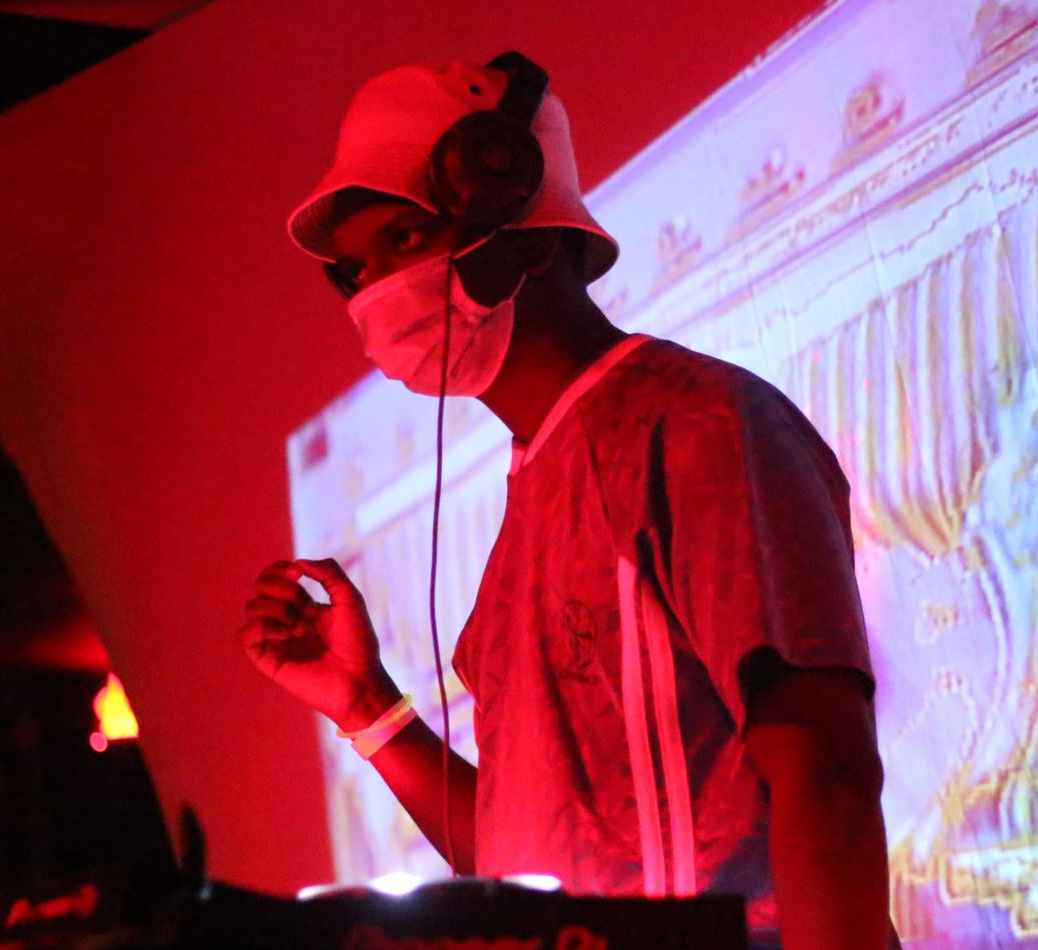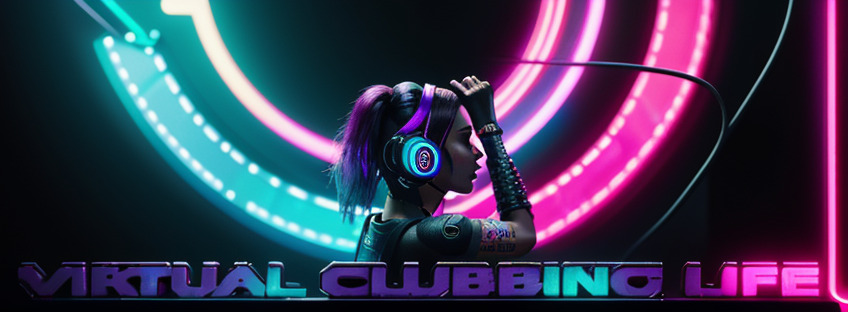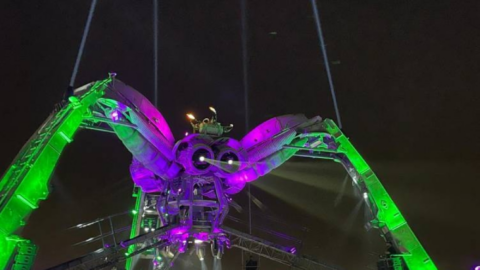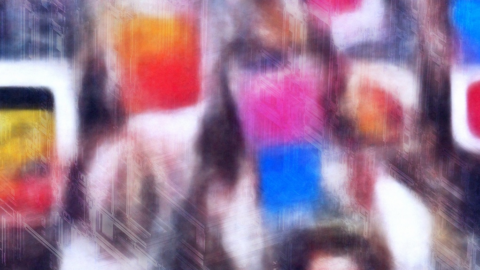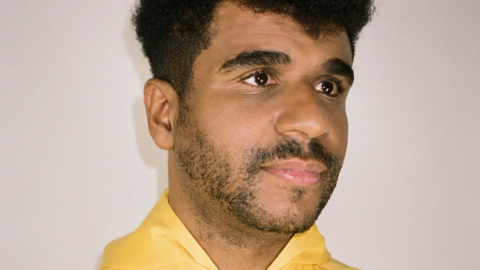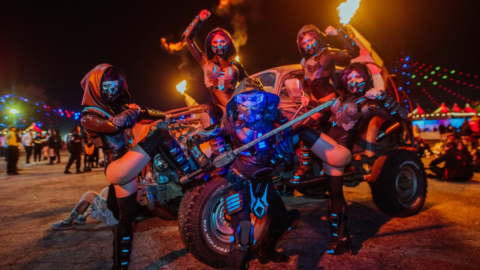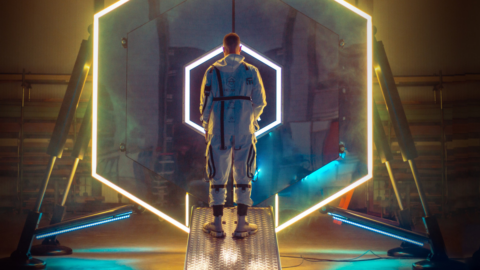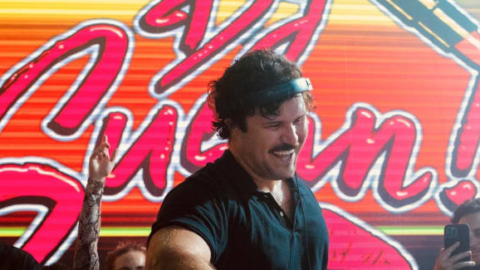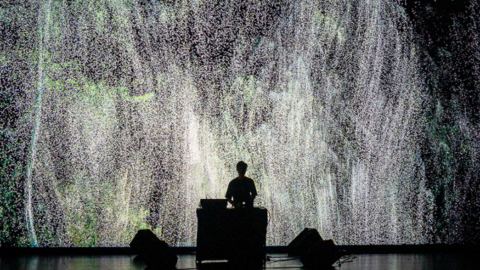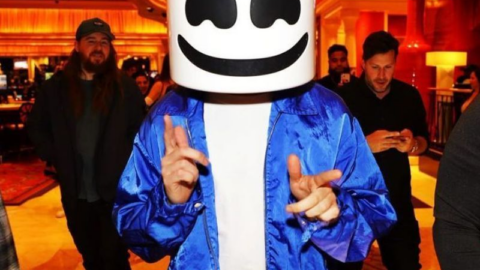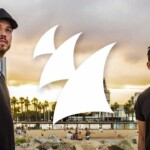Hyperallergic
Sensitive to Art & its Discontents
Editor’s Note: This article was produced in collaboration with the Arts & Culture MA concentration at Columbia University’s Graduate School of Journalism.
***
In 2020, as the pandemic was raging, DJ and electronic music producer Obie Fernandez was forced to put his performance career on hold. With clubs and venues being closed because of lockdown, many artists had to look for new sources of revenue to make ends meet. Fernandez recounts how he knew artists who were “way more famous” than him who started selling their equipment to sustain themselves. He is also familiar with the case of a DJ from Chicago who became homeless because of the pandemic’s effect on his career. In response to this landscape, Fernandez created what would become RCRDSHP, a platform that allows artists to support themselves by selling digital collectibles while sporting the slogan “music is valuable.”
Similarly, Canadian DJ Somna found success as a streamer only after being forced to cancel his tour plans when the pandemic hit. Two years later, live shows are back, but he still live streams three times a week in his Twitch channel SomnaMusic, which has over eleven thousand followers. “I get to talk with people, share my music, and build this artist-fan relationship,” he explains. “It’s something I always knew I was going to keep doing.”
The use of new technologies such as NFTs, live streaming, and blockchain has been growing steadily in the music world since the pandemic, according to a report by the International Music Summit (IMS). Many of the most successful artists to make this leap come from electronic music.
“One of the reasons I thought this was going to work is that people buy vinyl as tokens,” says Fernandez. “A lot of people who buy records either don’t listen to them or don’t even have a record player. So why are they buying a piece of vinyl and not listening to it? Well, because it’s a collectible.”
Collectibles on RCRDSHP always include playable music but that is often just a fraction of the content. In fact, these “drops” can incorporate any kind of digital content the creator cares to add, for example mixes, video footage, and production tutorials. On the lower end, prices range from around $8 to $20, while individual artist’s pages offer collectibles for $2. Rare drops, however, cost $100, and because only around 20 are available at any given time, they sell out quickly. The creators of RCRDSHP explicitly state on the website that “resurrecting scarcity” in response to the commodification of music is a key part of their mission.
Although streaming is by far the most popular way of listening to music in the US (83% of the industry’s revenue), artists and commentators have long argued that it devalues the work of musicians. A report by Insider claims that Spotify pays around $0.0033 to artists per streaming song, a number that has decreased gradually since 2014. Considering the massive number of songs on the platform (more than 80 million), the economic value of an individual track is practically negligible, undermining the perception of its value as music.
For Nicholas Ditri, member of the successful electronic music duo Disco Fries, NFTs can be seen as a “new format” for musicians. This does not mean, however, that they are a replacement for streaming or other types of media. “It’s just another great asset to have in your toolset as an artist,” he says. For Ditri, streaming and radio are still valuable and effective ways to share music. “Because of this technology and these platforms that emerge, we’re given options, which I think for an artist is what they need. They need to be able to diversify.”
For lesser-known artists, however, the experience with new technologies can be different. Chase Cofield, who DJs under the name Friend of a Friend, first started performing in 2020, just weeks before lockdown. He dabbled in live streaming DJ sets for local clubs during the pandemic but has since stopped. When it comes to digital art, he is skeptical. “It doesn’t appeal to me,” he says. “I would rather just try to make music through traditional means […] There might be a future in it, but for now it’s just kind of cringey when you see ‘NFT’ attached to something.”
In open letters published by Hyperallergic, faculty and students at UC Irvine’s Art History and Visual Studies departments demand higher wages and more support for its academic workers.
It’s not the first time Joe Scanlan, a tenured art professor at the university, is criticized for using racist gestures and language.
At Arizona State University, we value how diversity and creative thinking advance research, and take responsibility for the public we serve.
Young, queer, and non-White tattoo artists are exploring how the artform can complement the body’s natural curves and colors.
Collaging debris culled during urban excursions, Michael Alvarez portrays the liminal spaces of his city, from freeway underpasses to public parks.
The core pedagogical approach of this low-residency program is based on nurturing mentorships with prominent Native artists.
In the southwestern LA County city’s annual art event, local artists and newcomers explored spiritualism, freedom, and everyday slices of life.
Self-Determined: A Contemporary Survey of Native and Indigenous Artists prompts questions about shared contexts and individual expression.
For Native American Heritage Month, the Native Cinema Showcase includes over 35 free online screenings representing 30 Indigenous Nations in eight different countries.
Red Night weaves together influences from horror cinema, pop culture, and political theory.
Borrowing the model of the palimpsest, George’s The Umayyad Mosque of Damascus: Art, Faith and Empire in Early Islam takes the reader on a vivid tour of the renowned mosque’s history, meaning, and significance.
Edelheit, whose painting “Tattooed Lady” is featured in the exhibition New York: 1962–1964, will discuss her life, work, and artistic vision at this in-person event in NYC.
Sotheby’s will be auctioning an almost complete Tyrannosaurus Rex skull that it boasts is just the right size for collectors.
Voice a Wild Dream dismantles the idea that activism is driven by individual charismatic figures; in reality, social change is possible because many hands come together.
Carlos José Jijón is an Ecuadorian journalist living in New York City. Currently, he is part of Columbia University’s Graduate School of Journalism program with the Arts & Culture MA concentration. Before coming to the US, Jijón worked… More by Carlos José Jijón
Your email address will not be published.
{{#message}}{{{message}}}{{/message}}{{^message}}Your submission failed. The server responded with {{status_text}} (code {{status_code}}). Please contact the developer of this form processor to improve this message. Learn More{{/message}}
{{#message}}{{{message}}}{{/message}}{{^message}}It appears your submission was successful. Even though the server responded OK, it is possible the submission was not processed. Please contact the developer of this form processor to improve this message. Learn More{{/message}}
Submitting…
Hyperallergic is a forum for serious, playful, and radical thinking about art in the world today. Founded in 2009, Hyperallergic is headquartered in Brooklyn, New York.
